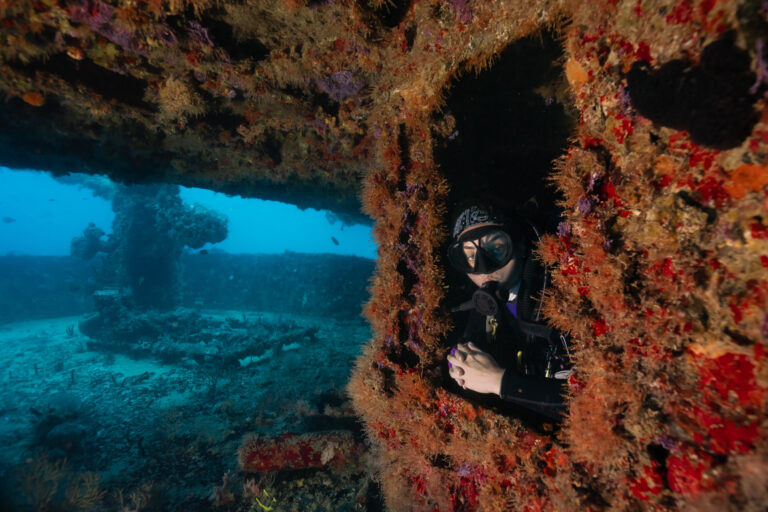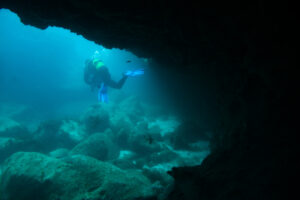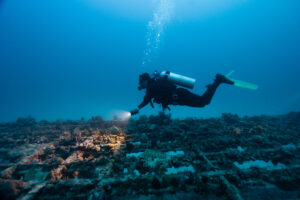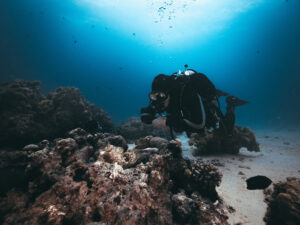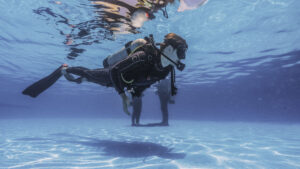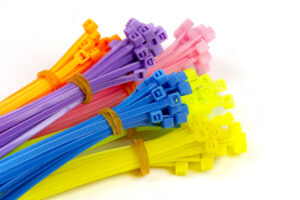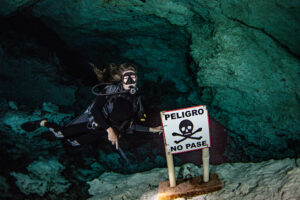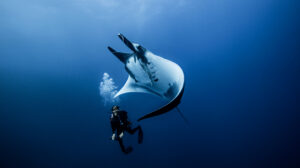What is a Reef Hook?
A reef hook is a specialized tool used by scuba divers to anchor themselves to a reef or rocky substrate, primarily in areas with strong currents. This piece of equipment allows divers to remain stationary while observing marine life or conducting underwater activities without exerting excessive energy swimming against the current. The hook typically consists of a metal hook attached to a durable line or strap, which divers can secure to their buoyancy compensator (BCD) or another part of their gear. By using a reef hook, divers can minimize their physical strain and reduce the risk of damaging delicate coral formations through inadvertent contact.
History and Development of the Reef Hook
The concept of the reef hook emerged from the need for divers to manage strong currents efficiently. Early iterations of reef hooks were rudimentary, often homemade from available materials such as metal rods bent into hook shapes. These early versions provided the basic functionality but lacked the refinement and safety features of modern designs.
The development of reef hooks saw significant improvements in the late 20th century as recreational diving grew in popularity. Innovations in materials and design were driven by the increased awareness of marine conservation and the need for safer diving practices. Stainless steel became a preferred material due to its resistance to corrosion in saltwater environments, and ergonomic designs were introduced to enhance usability.
By the early 2000s, the reef hook had become a common accessory for divers in regions known for strong currents, such as the Maldives and Palau. Manufacturers began producing reef hooks with more robust construction and added features like retractable lines and integrated clips, making them more versatile and user-friendly. The modern reef hook is the result of decades of evolution, balancing functionality, safety, and environmental considerations.
Types of Reef Hooks
Reef hooks come in various designs to suit different diving conditions and preferences. The single hook design is the most basic, featuring a single metal hook attached to a sturdy line. This type is simple and effective, suitable for most recreational diving scenarios. Double hook designs, on the other hand, offer added security by providing two points of attachment. This can be particularly useful in extremely strong currents where a single point might not be sufficient.
Materials used in reef hooks also vary, with stainless steel and titanium being the most common. Stainless steel is favored for its durability and cost-effectiveness, while titanium is prized for its lightweight properties and superior resistance to corrosion. Titanium reef hooks are often chosen by divers who require high-performance equipment for frequent use.
Some reef hooks come with additional features that enhance their functionality. Retractable lines, for instance, allow divers to adjust the length of the line easily, providing greater flexibility in different situations. Integrated clips or carabiners can simplify the process of attaching and detaching the reef hook from a diver’s gear, making it quicker and more convenient to use.
Practical Applications
Reef hooks are invaluable tools for divers in various scenarios. One of the primary uses is in areas with strong currents, where maintaining a stationary position can be challenging. By securing themselves with a reef hook, divers can conserve energy and focus on observing marine life or conducting underwater photography. This is particularly beneficial in environments like drift dives, where currents can be too strong for a diver to swim against effectively.
Using a reef hook involves several key steps to ensure safety and effectiveness. First, divers must choose an appropriate anchoring point that is stable and not harmful to the reef. Once the hook is securely in place, the diver can adjust their position by controlling the length of the line. It is essential to maintain neutral buoyancy to avoid putting excessive strain on the reef or the hook.
Safety is paramount when using reef hooks. Divers should always be aware of their surroundings and avoid anchoring to fragile coral or other sensitive marine structures. Proper training in the use of reef hooks is crucial to prevent accidents and environmental damage. Common mistakes include anchoring in unsuitable locations, using a damaged or poorly maintained hook, and failing to monitor the hook’s attachment point regularly during the dive.
Environmental Considerations
The use of reef hooks, while beneficial for divers, must be balanced with environmental responsibility. Improper use can lead to significant damage to coral reefs, which are already vulnerable to a range of threats including climate change and pollution. Divers must be educated on the importance of choosing appropriate anchoring points and avoiding live coral.
Best practices for using reef hooks include selecting anchoring points on rock or dead coral, where the risk of damage is minimized. Divers should also be mindful of their buoyancy and avoid dragging the hook or line across the reef. Regular training and awareness campaigns can help promote responsible use among the diving community.
Negative effects of improper reef hook use can include physical damage to coral structures, disruption of marine life habitats, and the introduction of pollutants from damaged equipment. Mitigating these effects requires a combination of diver education, stringent regulations, and the development of eco-friendly reef hook designs that reduce potential harm to the environment.
Regulations and Guidelines
Regulations regarding the use of reef hooks vary by region and are often enforced by local marine conservation authorities. In many popular diving destinations, specific guidelines are provided to ensure that reef hooks are used in a manner that protects the marine environment. These regulations typically include restrictions on where reef hooks can be used and guidelines on proper anchoring techniques.
Diving organizations and marine conservation bodies, such as PADI and the Coral Reef Alliance, offer training programs that include instruction on the responsible use of reef hooks. These programs emphasize the importance of environmental stewardship and provide divers with the knowledge and skills needed to minimize their impact on coral reefs.
Compliance with these regulations is crucial for preserving marine ecosystems and ensuring the sustainability of recreational diving. Divers are encouraged to stay informed about local rules and participate in conservation efforts to protect the underwater environments they enjoy. Manufacturers also play a role by designing reef hooks that meet safety standards and reduce environmental impact.
Maintenance and Care
Proper maintenance of reef hooks is essential for ensuring their longevity and reliability. After each use, reef hooks should be thoroughly rinsed with fresh water to remove any salt, sand, or debris. This helps prevent corrosion and keeps the hook and line in good condition. Regular inspection of the hook for signs of wear or damage is also important. Any cracks, bends, or other deformities should be addressed immediately, either by repair or replacement.
Storage is another critical aspect of reef hook care. Hooks should be kept in a dry, cool place, away from direct sunlight and other sources of heat. Storing reef hooks properly helps prevent degradation of the materials and extends their lifespan. Divers should also periodically check the line or strap for fraying or other signs of wear, replacing it as necessary to maintain the hook’s integrity.
Regular maintenance not only ensures the safety and effectiveness of the reef hook but also contributes to the diver’s overall safety. A well-maintained reef hook is less likely to fail during use, reducing the risk of accidents and ensuring a positive diving experience. By investing time in proper care, divers can enjoy the benefits of their reef hook for many years.
Key Takeaways
Reef hooks are essential tools for scuba divers, providing stability and safety in strong currents while allowing for close observation of marine life. Their development has evolved to balance functionality with environmental responsibility. Understanding the different types, practical applications, and maintenance of reef hooks is crucial for their effective and responsible use. By adhering to regulations and best practices, divers can protect fragile marine ecosystems and enhance their underwater experiences.

